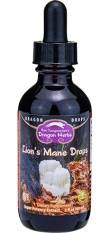The New View on Candida

Candida is everywhere. It’s in the air you breathe, in the foods you eat, and is a normal part of everyone’s intestinal flora.
When your intestinal flora is thriving, candida exists peacefully in the mucus membrane of your intestinal wall and is kept in check as part of a healthy balance. But, when normal probiotic defenses break down and conditions are ripe for Candida to overgrow, it changes its form and goes into attack mode, wreaking havoc in your body and causing a host of symptoms and problems.
The changing face and form of Candida is what makes it such a challenge to effectively treat.
The Many Faces of Candida
More than 20 strains of Candida have been identified in the human body, and this fungus takes on several different forms in order to protect itself from being eradicated.
Candida normally exists as a mild-mannered single-celled organism, nestled in the mucus membranes of the gastrointestinal tract, feeding on excess sugar to grow and reproduce. This is the lens through which researchers view it, and how drugs and even natural approaches are developed to counteract it.
The problem is, when Candida becomes pathogenic and no-more-mister-nice-guy, it joins itself together in long strands called hyphae that drill into the walls of the intestines, allowing fungus, toxins, and other debris direct access to blood vessels and other organs.
These root-like structures also bore into macrophages, the immune system cells designed to kill Candida, and render them helpless to mount a defense against this aggressive invader. As if all that isn’t enough, it then groups together and forms a protective shield around itself known as a biofilm.
This protective biofilm allows Candida to create an environment it thrives in, with just the right pH and plenty of food to keep doing its dastardly deeds and growing its population. As this yeast spreads, reproduces, and distributes its toxic entourage, it can affect virtually any part of your body and cause a wide variety of symptoms.
Signs You May Have a Candida Overgrowth
Candida has won the popularity contest as the most common fungal infection, with one in three adults having an overgrowth. While it typically starts in the digestive tract, symptoms can be wide-ranging and varied, as it changes form and spreads to other areas of the body.
Symptoms You May Feel with Candida Overgrowth:
- Intense fatigue, headaches, insomnia, weight gain or loss, mood swings, pain, jittery feelings, appetite loss, agitation.
- Bloating, flatulence, indigestion, constipation, diarrhea, stomach pain, stools with mucus.
- Burning, frequent, and/or urgent urination, recurring bladder infections, cystitis.
- Cramps, irregular periods, depression, severe PMS symptoms.
- Itching, burning, white vaginal discharge.
- Dry mouth, rashes, sore and/or bleeding gums, white patches, white or brown coating on the tongue.
- Nasal itching and sinus congestion.
- Psoriasis, rashes, acne.
- Burning sensations in the eyes, blurry vision, floaters, chronic inflammation, tearing, sudden changes in vision.
- Loss of hearing, fluid in middle ear, recurring infections, ear pain.
Yeast Overgrowth Risk Factors
Candida overgrowth is so prevalent, with such a variety of symptoms, it makes it difficult to zero in on the causes of this stealth infection. Fortunately, we know several risk factors, which greatly increase your chances of overgrowth. In truth, most of our difficulties with yeast are the unintended consequences of lifestyle habits and choices that were supposed to improve our health or help us lose weight.
The Most Common Risk Factors for Yeast Overgrowth Include:
- Repeated course of antibiotics
- Impaired immunity, including from immunosuppressant medications
- Hormone fluctuations
- Female anatomy
- Diet high in carbohydrates and sugars
- Underactive thyroid
- Nutrient deficiencies
- Living in a cool, damp, rainy climate
- Other fungal exposure, like mold in your home
- Heavy metal toxicity
Could You Have Excess Yeast? Take the Quiz!
With the wide variety of symptoms Candida overgrowth can cause, it can be confusing to determine if Candida is truly at the root of your issues.
While this quiz can’t give you a definitive answer, it is helpful in narrowing down its potential role. This survey was originally created by the late William Crook, MD, a wonderful personal friend of mine who was considered a pioneer in researching the role of Candida in a plethora of health issues, and who authored several books on the subject.
Candida Quiz
If your answer to any of the following questions is “yes,” write down the number of points for that question. At the end, add up the total points. Your final score indicates the probability of a yeast connection to your health issues.
- Have you taken repeated or prolonged courses of antibiotics? (4 points)
- Have you been bothered by recurrent vaginal, prostate, or urinary infections? (3 points)
- Do you feel “sick all over,” yet the cause has not been found? (2 points)
- Are you bothered by hormone disturbances, including PMS, menstrual irregularities, sexual dysfunction, sugar cravings, low body temperature, or fatigue? (2 points)
- Are you unusually sensitive to tobacco smoke, perfumes and colognes, and chemical odors? (2 points)
- Are you bothered by memory or concentration problems? Do you sometimes feel spaced out or in a brain fog? (2 points)
- Have you taken a prolonged course of prednisone or other steroids, or have you taken birth control pills for more than 3 years? (2 points)
- Do some foods disagree with you or trigger your symptoms? (1 point)
- Do you suffer with constipation, diarrhea, bloating, or abdominal pain? (1 point)
- Does your skin itch, tingle or burn; or is it unusually dry; or are you bothered by rashes? (1 point)
Women’s scores: If you score 9 or more, your health problems are probably linked to yeast overgrowth. If you score 12 or more, your health problems are almost certainly connected to yeast.
Men’s scores: If you score 7 or more, your health problems are most likely linked to yeast. A score of 10 or more indicates that your health problems are almost certainly connected to yeast.
Break the Biofilm to Beat the Candida
Recent research shows biofilms make yeast much more resistant to treatment and hide it from your immune system.
When Candida groups together, it’s more aggressive and doesn’t respond to treatment the same way a cell on its own would. A large, well-established population forms a biofilm that seems to withstand most of what you throw its way. The longer the Candida is allowed to overgrow, the stronger the biofilm and the more it can resist treatment.
What is Biofilm?
Biofilms are matrices made of complex sugars called polysaccharides. One-third of a biofilm is comprised of glucose, the sugar your body uses the most. So, Candida not only feeds on sugar to grow and reproduce, it also uses it to form the protective shell around each colony. It would seem the logical approach is to cut the sugar out of your diet and use anti-candida herbs, but because of the strength of the biofilm and its ability to use your body’s own blood sugar supply, a more coordinated, 4-pronged approach is needed to beat the biofilm and truly tame Candida into submission.
Four Ways to Fight Candida
-
Cut Off the Food Supply to Candida
All carbohydrates can be broken down into the sugars Candida feeds on. So it’s not only essential to eliminate all obvious sources of sugars, but also to severely restrict carbs in the diet. This includes fruits, juices, alcoholic beverages, and not just processed grains but whole grains that contain gluten as well. I also recommend removing mushrooms and fermented foods (except raw apple cider vinegar) while you are cleansing your body of yeast, because these also encourage Candida overgrowth.
-
Add Enzymes to Break Down Candida Biofilms
Proteolytic enzymes are enzymes that “chew up” and break down the bonds holding the biofilms together. Lumbrokinase, nattokinase, and serrapeptase are among the most powerful biofilm disrupting enzymes we’ve discovered to date.
Anti-inflammatory enzyme products like Wobenzym and Inflazym are also heavy hitters when it comes to breaking down biofilms. Anytime you break open a biofilm, the toxic contents are no longer walled off and your body is exposed in proportions it’s not accustomed to. It’s akin to cracking open the shell on an egg. This means you may experience a worsening of your symptoms temporarily while the toxic contents are being flushed out. While this is unpleasant, it’s a good sign you are on the right track.
-
Use Antifungal Supplements to Eradicate Candida
Once the biofilm is broken down, Candida is wide open for attack. I recommend bursts of broad-spectrum germicides like oil of oregano and Pau d’Arco.
-
Use Probiotics to Fight Candida
Having an overgrowth of Candida is already a sign you are low on the healthy bacteria that normally fortify your immune system and colonize your gut, but addressing Candida naturally can have the unintended consequences of reducing the population of “good guys” as well. Refortify your immune system and your gut by supplementing with a good quality probiotic.
Ann Louise Gittleman, Ph.D., C.N.S.
Ann Louise Gittleman, PhD, is a New York Times award-winning author of 30 books on detox, health, and healing, including the international bestselling Fat Flush Plan and Zapped! Visit her blog and join her online Fat Flush Community.
Don't Miss a Thing!
Get the latest articles, recipes, and more, when you sign up for the tasteforlife.com newsletter.

